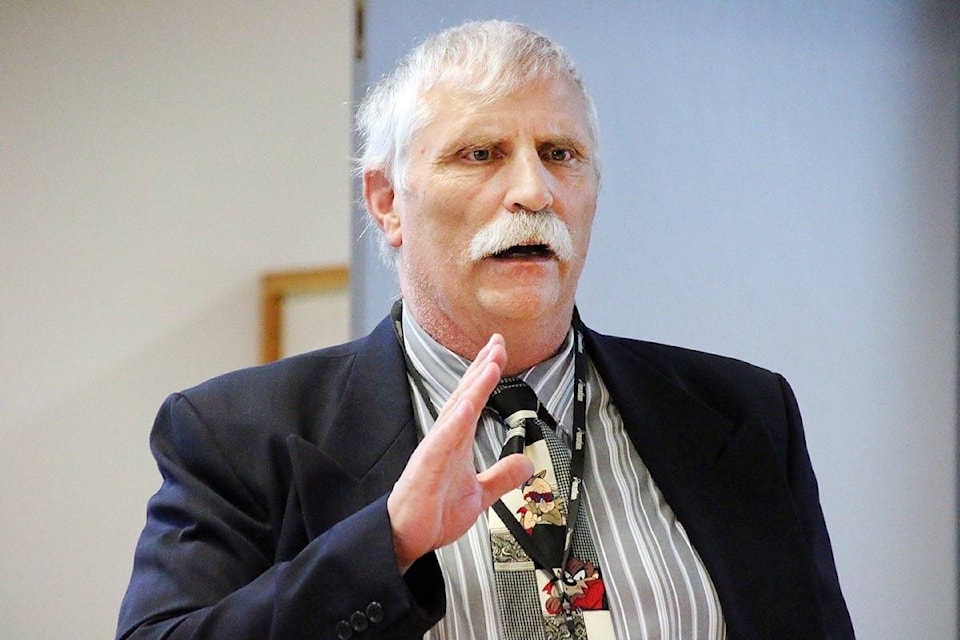A proliferation of discarded needles has pushed Island Health to step up safety efforts in response to concerns raised by Valley residents.
But that’s only the tip of the iceberg when it comes to the drug and overdose crisis the community is facing, according to Island Health’s Dr. Paul Hasselback.
“Increases in overdose and overdose fatalities in the Cowichan area are a challenge caused by new illicit drugs including the use of fentanyl, and this has also led to an increase in discarded needles,” said Medical Health Officer Hasselback.
“We acknowledge the concerns of Cowichan Valley residents about discarded needles and are working with Cowichan Valley partners in increasing needle recovery efforts to keep our public spaces clean and safe, particularly where children and families visit.”
A new needle sweep service will see the Canadian Mental Health Association, in partnership with Island Health, collecting sharps seven days per week for an initial period of six months. The hours and area covered by the sweeps will be determined in partnership with the CMHA and community stakeholders.
The new needle sweep service is in addition to sweeps regularly carried out in the vicinity of Warmland House and by NARSF (formerly the Nanaimo and Area Resource Services for Families) as part of their weekly outreach service to Cowichan and Cowichan Lake.
Also, Island Health has provided North Cowichan and Duncan with eight needle drop boxes that have been installed where drug use is most prevalent. Needles can be returned to numerous locations in the Cowichan area, including Margaret Moss, Warmland House, Duncan Mental Health and the Cowichan Valley Food Bank.
View a map of needle collection locations in the Cowichan Valley: https://www.google.com/maps/d/viewer?mid=108XBWC0asIyvlQW25MPiiZLMTwg&ll=48.864160033260745%2C-123.894181&z=11If you want to report a discarded needle, call 250-732-3330 or email dave.street@cmha.bc.ca.
Please provide a detailed description of the location (or GPS coordinates) and the number of needles found. Needle collection will be prioritized based on volumes and location.
Visit any Island Health location or www.viha.ca for information on how to dispose of needles safely and what to do if you are pricked by a discarded needle.
But the needle recovery program is just one step in responding to the overdose crisis in the Cowichan Valley, Hasselback emphasized.
Community concerns about discarded needles need to be addressed as overdose prevention services are established, he said.
Between January 1, 2016 and May 31, 2017, 254 people died from suspected opioid drug overdoses in the Island Health region.
At least 23 of these people were from the Cowichan Valley.
These tragic events highlight the need for a broad response to the current health crisis through education, prevention, outreach, harm reduction, naloxone kits, counselling, substance use treatment and supports, and access to mental health and substance use services, Island Health says.
A proposed overdose prevention site in the Cowichan Valley continues to be explored — including alternative service models and locations.
“Island Health remains committed to establishing overdose prevention services as these have proven to save lives,” Hasselback said.
Hasselback said that some concerns had been raised directly with his office “by individuals that have been voracious in their communications. That doesn’t mean that there aren’t issues that need to be addressed.
“I think every community has been grappling with what are the implications of this change in the illicit drugs that are out on the street. That’s what’s happened over the past three years,” he said.
“We really need to be addressing the illicit drug issues to improve services as the foundation upon which we can address other issues like discarded needles.”
An overdose prevention site has been talked about but a decision on where and when has yet to be made, he said, pointing out that implementing harm reduction strategies will have its own effect.
Introduction of an overdose prevention site will mean “a reduction in the number of used needles around the area…and a chance to engage individuals in care,” Hasselback said.
“I think there’s something in the idea that the detractors have actually prolonged the challenges going on in the Cowichan Valley by not having those services available.
“But, it’s not the only thing that needs to be done, and I keep stressing this.
“We need to build multiple blocks and unfortunately if we worry too much about a legitimate thing like public safety and picking up needles, we can get sidetracked from the fact that people are dying, overdoses are occurring and we have the increased challenge of managing newer drugs that have hit the street over which we don’t have any control. Then, the Valley is perhaps not getting what it needs,” Hasselback said.
Needles and other harm reduction supplies, such as syringes and glass pipes, are distributed as part of a province-wide program that has been in place for more than 15 years. The program provides needles to people who use drugs to reduce the transmission of blood-borne diseases through needle-sharing.
